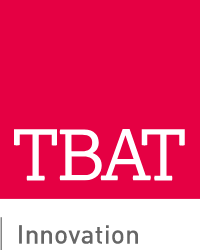


Ian Davie
Senior Consultant

A recent change from HMRC was the merging of the SME and RDEC schemes into a single New RDEC (imaginative but real name for the scheme) for Accounting Periods starting on or after the 1st April 2024. As a result, companies with 12-month accounting periods starting on this date will need to submit their claims under the New RDEC scheme from April 2025 onward.
The fundamental principle of the New RDEC scheme remains the same as the old RDEC. This is an income above the line credit, which means it is taxable, and must go through the same 7-step process to determine how the claim should be dealt with, which can result in carrying forward losses. Even the RDEC rate is the same at 20%, though after tax you will get a net 15% or 16.2% of eligible costs, depending on the corporation tax rate that applies.
The areas where there are significant differences are in the following:
A major change is that any companies, Large or SMEs, can now include sub-contractor costs as part of their claims in the New RDEC. Historically sub-contractor costs were excluded from the old RDEC scheme. There is no change for costs categorised as EPWs (Externally Provided Workers) as these could be included previously anyway. This will benefit companies previously claiming under the old RDEC for Large Companies and grant/subsidised projects for SMEs, as these can now include their sub-contractor R&D related costs in their claims.
Though companies can now claim for sub-contractor costs, HMRC have re-focussed the New RDEC and ERIS schemes on UK sub-contractor costs for accounting periods starting on or after 1 April 2024. This means that if you use engineers, developers or other R&D providers that are cheaper abroad or they are the expert in their field then you can no longer include these costs into your claim.
If the person is an expert in their field and work abroad then HMRC’s argument would be to employ them in the UK PAYE scheme, then you can include them in the claim.
If the person works abroad but is paid through the UK PAYE system, then the cost can be included.
There are certain circumstances where certain foreign costs would still qualify, classed as Qualifying Overseas Expenditure (QOE):
This can include accessing features or conditions in the world that do not exist in the UK. It can be for explicit legal reasons where the work has to be carried out abroad, or where the cost is prohibitive, or wholly unreasonable, to provide the conditions in the UK.
To claim for QOE sub-contractor or EPW costs it is not simply stating that you had to go abroad, though upfront evidence not need to be provided, however should HMRC request it this needs to be available.
This is explored in more detail in this article – Qualifying Overseas Expenditure
In the old SME or RDEC schemes, the company that funded the R&D was typically the one eligible to claim. However, if a company was contracted for an R&D project, classified as a subsidised R&D project by a large company, then the subcontracted company was the one entitled to claim.
For the New RDEC it is the company that intends, considers, plans and foresees the R&D activity that can make the R&D claim, which could be the contractor or the sub-contractor. This is a major change and will affect companies that traditionally claimed for sub-contracted R&D.
This is explored in more detail in this article – What does ‘contemplated’ R&D mean for contracted-out activities?
Instead of claiming eligible costs for self-funded costs under the old SME scheme, SMEs will now claim under the New RDEC scheme. Unless they are classed as Research Intensive and loss making, in which case they can claim under the ERIS (Enhanced R&D Intensive Support) scheme. The ERIS scheme came live after 1 April 2023 and means that either 40%, or 30% after April 2024, of all costs are R&D related. This gives a higher benefit rate of up to 27% of eligible costs as a cash payment from HMRC.
Though the New RDEC looks very similar in operation to the old RDEC in the way the scheme operates there are some significant differences about who can claim under different circumstances and what costs can be included.
If you have questions about how these new guidelines impact your R&D tax relief claims or need support in preparing your documentation, please get in touch with us today. Our expertise can help ensure you maximise your claim and remain compliant with HMRC’s requirements.
Since 2022, HMRC’s Mandatory Random Enquiry Programme (MREP) has been reviewing R&D tax relief claims to reduce error and fraud. While the programme is effective in improving compliance, it has also caused a significant drop in SME claims. This article examines the impact of MREP on SME behaviour, explores why businesses are withdrawing from claiming, and questions whether the programme is supporting innovation or discouraging genuine R&D activity.

We take an in-depth look at the latest R&D Tax Credit Statistics, covering the period ending March 2024, highlighting key updates and trends in the R&D tax relief landscape. It covers changes to the SME and RDEC schemes, the introduction of new requirements such as the Claim Notification process, and developments in HMRC compliance through the Mandatory Random Enquiry Programme.

Assists organisations in accessing research and development grant funding across a range of UK and EU schemes and industry sectors.
Get In Touch